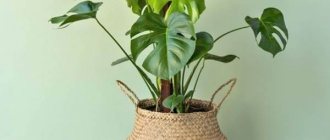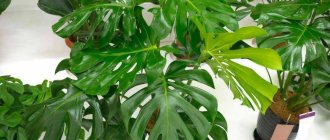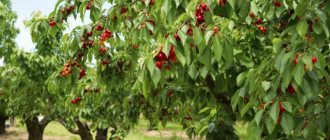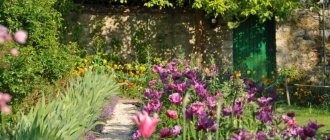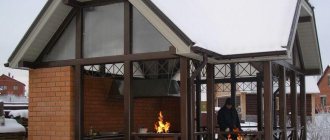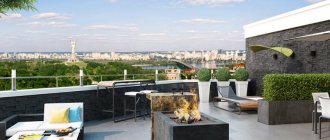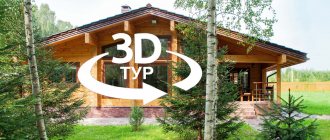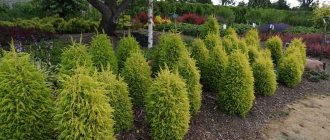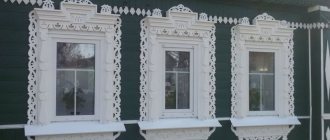Review author: Terrari School of Design
Trees give the design of the site a complete look and allow you to create cozy corners in the garden. They provide coolness in the summer heat and help hold the soil with powerful roots.
But these are not all the advantages of planting trees. Some of them are credited with magical properties: they can significantly improve the atmosphere, bring prosperity and success to the inhabitants of the house. What signs are associated with trees? What is better to plant close to home?
Cherry tree
Cherry has long been associated with the beginning of life, its earthly embodiment. It is symbolic that the tree is covered with flowers before the leaves appear on it. For many peoples, cherry blossoms symbolize the outfit of a chaste bride.
Branches of cherry blossoms used to be used in girls' fortune telling for love. Unmarried women plucked a cherry branch on the night of December 7 (the day of the Great Martyr Catherine, who patronizes single girls) and placed it in a vase of water. If the branch bloomed for Christmas, then the girl was predicted to get married soon.
Cherry generously shares its energy with the inhabitants of the house: it is a donor tree. It helps to improve relationships between spouses and brings prosperity and prosperity to the home.
According to folk signs
Since time immemorial, people have noticed how trees planted near a house affected its well-being. We observed, found patterns and drew conclusions. Now the signs of our ancestors have partially been confirmed in dendrotherapy. Therefore, some site owners prefer to focus on them.
Can
According to popular belief, you can plant:
- cherry - a kind of talisman that brings happiness and prevents losses and adversity;
- juniper - protects against evil spirits and the evil eye;
- rosehip - strengthens relationships between spouses, protects against betrayal;
- larch - relieves heavy thoughts, bad mood, negativity;
- acacia - children's laughter cannot be heard in the house near which it is planted (since ancient times it was believed that it helps childless couples become parents);
- viburnum - performs a protective function, preventing illness from entering the house;
- maple - promotes material well-being, provides the family with prosperity;
- rowan - eliminates negative energy, reconciles quarrels, and gives women over 40 a second youth;
- apple tree - helps young girls get married quickly.
It is believed that all these trees will bring happiness and prosperity to the house.
It is forbidden
The list of prohibited trees includes:
- oak - takes the life of the most important member of the family, who may die very soon;
- birch - is a vessel for spirits, and not all of them are peaceful towards people;
- willow - according to legend, whoever plants it near the house dies the same year;
- aspen - brings with it betrayal, betrayal, resentment, quarrels, discord;
- willow - the one who plants it on the plot will doom his family to a joyless existence, will cry a lot and suffer;
- poplar is a home destroyer in the literal and figurative sense: its powerful roots break the foundation, and its energy separates lovers;
- pine - too selfish to tolerate neighbors next to it: not a single plant will get along with it, only it will reign on the site (the sign has a scientific explanation: pine gives a lot of shade, and its henna is not suitable for humus and does not benefit the soil) ;
- thuyu - carries with it the crown of celibacy, preventing the creation of a young family.
Kalina
Since ancient times, the Slavs considered this tree sacred. It was used as a talisman to protect against the evil eye and damage. Usually, viburnum was planted at the very gate of the house. The ritual was associated with receiving news and the safe return of loved ones.
Viburnum fruits were used for a decoction that boosted immunity. Viburnum beads helped sharpen intuition and protect yourself from evil people. In addition, viburnum berry juice was used for cosmetic procedures to help prolong youth.
Lawn
The easiest way to improve the area on the outside of the fence is to sow it with lawn grass. Such unpretentious vegetation does not require special care and looks neat throughout the season.
Water the grass when it's dry, feed it periodically, and trim it regularly to maintain its decorative appearance.
- 11 tips for lawn owners
These tips will be very useful for summer residents and owners of private houses.
This option is suitable for “lazy” summer residents, as well as those who do not have the opportunity to “swing wild” in their fantasies due to the limited space between the fence and the road - even a narrow strip of lawn will look much more aesthetically pleasing than sloppy weeds.
Rose hip
It personifies love feelings and experiences, helps to fan the fire of passion between lovers, and return the former ardor to the relationship. A rose hip planted near a house attracts money. Knowledgeable people advise planting it near the entrance doors or windows.
It is believed that the thorns of the plant effectively scare away evil spirits, allow you to get rid of energy vampires, and also serve as reliable protection against damage, love spells and the evil eye.
Useful tips for planting shrubs and trees along fences
If you decide to plant plants near your home for the first time, we advise you to consider the following:
- The best time to plant or replant plants is autumn. But it is advisable to complete the work before mid-October, so that the seedling has time to take root before the first cold weather.
- If flowering occurs in the spring, then you need to plant it in the fall; if it blooms at the end of summer, you can start planting in the spring.
- Planting any type of living plants at sub-zero temperatures is impossible.
- If the work was not completed before the end of October, you can try to protect the roots of the seedlings with mulching (peat, sawdust, leaves).
- All flowering and fruiting plants are planted on the sunny side of the site.
- The distance from the road surface should be from 30 to 50 cm.
Photo: clumps planted along the perimeter of the fence
Tall trees and shrubs must be trimmed periodically so that the crown of the trees does not block the view of the roadway or cause conflicts with neighbors.
Spruce
Spruces are often planted from coniferous trees near the house. Some people mistakenly classify them as vampire trees. The spruce accumulates energy throughout the summer, and during the winter it processes and assimilates it.
Spruce is a powerful tool for air purification. It calms the nervous system and harmonizes space. To avoid having to cut down a tree near the house, it should be planted away from the house and buildings - the powerful roots of an adult spruce can destroy the foundation.
Video description
The video shows which coniferous trees can be used for landscaping a summer cottage:
Spreading wide crowns limit the entry of sunlight, this causes insolation. For any building, it is the culprit in the formation of dampness and, as a result, fungus and mold. You can believe or not in folk items, but such nuances must be taken into account. You cannot plant in front of the house those species that branch the root system up to four meters, which grow very quickly and, stretching out, completely cover half of the private land plot with their crown.
A large tree attracts lightning and becomes a source of fire Source tribktla.files.wordpress.com
Maple
Looking at photos of trees near the house, many stop at the beautiful openwork maple, which delights with colorful foliage in the autumn. According to the ancient beliefs of the Slavs, this is a tree into which the gods once turned a person. Therefore, the shape of the leaves resembles a human palm.
A maple planted near a house protects against unkind people, extinguishes quarrels and calms household members. Life becomes calmer, more measured and prosperous.
Medically
The effect of trees on human health is not yet fully understood. However, a huge amount of research is now being conducted on this issue. Therefore, some recommendations from a medical point of view still exist. There is even such a science as dendrotherapy, which deals with the prevention and treatment of diseases using the healing power of trees.
Can
According to dendrotherapy, donor trees can be planted near the house. They share positive energy with a person, thereby strengthening the body and spirit. These include:
- acacia - refreshes, gives physical strength;
- birch - treats depression and skin diseases, has a beneficial effect on the well-being of children and pregnant women;
- cherry and fir - strengthens self-confidence;
- hornbeam - relieves phobias and chronic fatigue;
- walnut - stops inflammatory processes;
- pear - comforts in grief;
- oak - gives determination, is useful for heart disease;
- cedar - blocks the spread of infections, improves thought processes;
- linden - increases concentration;
- sea buckthorn - dispels blues and depression;
- lilac - uplifts the mood;
- pine - helps to overcome depression, stress, cope with difficult life situations;
- apple tree - makes women attractive, normalizes hormonal levels.
From the point of view of dendrotherapy, all these trees are donors. This means that they can be planted near the house without fear that they will somehow harm your health.
On a note! Using the classification of donor vampires, do not forget that birch, hazel, alder, maple and ash are the strongest allergens.
It is forbidden
However, dendrotherapists warn that there are also vampire trees that take away (suck) energy from a person, thereby weakening his soul and body. They should not be planted near the house, so as not to harm the health of your family and friends and not to get sick yourself. Traditionally these include:
- spruce;
- willow;
- chestnut;
- maple;
- hazel;
- lemon;
- aspen;
- Rowan;
- poplar;
- thuja;
- bird cherry.
At some points, vampire trees are also beneficial for health. For example, if a person is seriously ill or depressed about something, they take away the negativity from him, sucking out the illness and bad mood. But they cannot stop and at some point they begin to absorb vital forces. Therefore, if you constantly come into contact with them (which happens if you plant them near the house), this is fraught with dangerous consequences.
Chokeberry and larch stand apart. In dendrotherapy they are classified as a mixed type. It is not yet clear when they have a positive and when a negative effect on human health.
Now you know why some trees can be planted near your house, while others cannot. It turns out that it’s not just about folk beliefs and issues of beauty. The main thing is not to harm your health.
Note. Since dendrotherapy is a branch of alternative medicine and provides not entirely stable data, lists of donors and vampires may vary in different sources.
Larch
This tree is gently calming, helping to combat depression and anxiety. It is recommended for people who want to get rid of attacks of melancholy to become more active. Helps you see the positive sides of life, realize your desires and move towards your goal.
Larch is considered a psychological tree. She charges with optimism and gives self-confidence. Previously, it was used as a talisman against the evil eye. It neutralizes conflicts, extinguishes tension and relieves aggression.
Photos of plantings on the site and beyond
Raspberry bushes after fencing
Living fencing of the site using conifers
Climbing plants planted along a chain-link mesh.
Landscaping the borders of the garden area is a natural set of living colors of landscape design, which will make the area well-groomed, cozy and protected from prying eyes.
When purchasing a plot of land and drawing up a plan for your future home, you definitely need to think about the placement of trees and shrubs, which are always planted first.
When purchasing a plot of land and drawing up a plan for your future home, you definitely need to think about the placement of trees and shrubs, which are always planted first.
This is explained not only by the size of the plants, but also by the relatively long period of growth before full flowering or fruiting.
Of course, it is impossible to plant all the ornamental and fruit trees on a summer cottage due to the limited territory, so you have to choose.
And when deciding which trees to plant on a site, you need to focus on two principles:
If we talk about fruit trees, apple trees require the simplest care (especially if you purchase a locally selected seedling that is resistant to common diseases and pests). Of course, unpretentious varieties do not have high taste, but they will not cause any trouble. But if you want to surprise your neighbors with something exotic, then you should think about planting yellow plum, actinidia, walnut or peach.
The same principle applies to ornamental trees and shrubs. For example, for a hedge you can use wild grapes, honeysuckle or drooping lilac, with minimal requirements for soil and climatic conditions, or you can decorate the area with juniper, barberry or hawthorn, which require a little more attention.
If you decide to plant a tree in your dacha, be sure to check the depth of the groundwater. Many trees, both fruit and ornamental, die as soon as their roots reach water. Such trees include the pear, which has a deeply penetrating root system. At first, the young seedling grows actively and pleases the owner, perhaps you will even be able to taste the first fruits, but then the tree begins to wither and dry up. Inexperienced gardeners complain about illness or poor-quality planting material and again buy and plant pear seedlings.
In order for tree plantings to truly become durable, it is necessary to take into account the requirements of each species for growing conditions.
Acacia
The tree feeds energy because it is a donor. Symbolizes purity, purity and rebirth. It promotes the birth of a new life, so it is recommended to plant it for couples who want to have a child.
In terms of energy, acacia is closer to women. It promotes peace, eliminates sadness and melancholy.
Juniper
It protects the peace and well-being of the owners of the house and is considered one of the most powerful protective trees. Juniper is able to cleanse the energy field of negative programs, get rid of damage and love spells.
To clean the house well, it is enough to periodically fumigate it with smoke from juniper branches. You need to plant a tree in front of your house.
Suitable types of plants for planting
Landscaping has several important benefits:
- air purification from dust and vehicle exhaust gases;
- giving the estate aesthetics;
- oxygen saturation of the air.
Climbing plants are well suited for decorating a fence from the street:
- hop;
- wild grapes;
- honeysuckle honeysuckle;
- actinidia;
- clematis.
Perennial tall herbaceous flowers are also suitable:
Compositions of shrubs and flowers - mixborders - are often planted to create a bright landscape composition.
The photo below is an example of this design.
Photo: flower arrangement
Plants should be selected in such a way that they are fragrant and bloom at different times, creating a year-round riot of colors in the area.
Both dwarf trees and coniferous species (thuja, juniper) would be appropriate. But such a combination requires constant care. When choosing cultures, you need to take into account their compatibility with each other.
Now let’s look at what plants should be planted near the fence in the yard or on the street side.
In the area near the fence
If the fence is high, then strong shading will not be favorable for all plants.
Photo: flowers and fruit trees planted near the fence
- Fir. Adapted to harsh climatic conditions, since its homeland is Siberia. In spring it becomes covered with purple cones.
- Yew. Loves high humidity, loose soil. The branches grow compactly. Optimal for the northern part of the country.
- Rowan . It grows well both in the shade and in the sun. It does not require special care. Will grow in any part of the site.
Do not exclude coniferous specimens - these are excellent air purifiers. Suitable spruce varieties:
To not only enjoy the beauty, but also enjoy the fruits, you can plant fruit trees:
There are also plenty of shrubs to choose from.
Photo: green area between the fence and garden path
Unpretentious species are considered:
- Elderberry. Does not require watering or fertilizing. Resistant to frost and strong shade.
- Hydrangea. Loves shade. It reaches a height of 1.5 m. The flowers resemble panicles.
- Thunberg's barberry. The unusual shape of the ball, up to 1 m high, will become an original decoration for the fence. It looks especially beautiful in autumn when the leaves turn red and yellow. Does not tolerate shade or cold winds well. Recommended locations are the southern or western side of the site. Does not require watering.
- Deren. The silvery bloom of the bush goes well with the coniferous trees planted along the fence on the site. Easy to cut. When planted in the spring in the fall, it will already reach a height of 1 m. It grows quickly, so you need to leave enough free space for it.
Don’t forget about the beauty and aroma of blooming lilacs and fruit hawthorn. Bright dahlias also look great.
It is better to plant shrubs in groups: taller crops in the background, lower specimens in front.
From the street side
Plantings along the fence on the street side trap dust and protect from prying eyes.
An excellent solution would be to plant:
- riverine or Tatarian maple;
- common or small-leaved elm;
- rowan;
- birch;
- and you;
- low-growing pine, spruce;
- chestnut;
- lilac.
When creating a coniferous composition, you should maintain a distance of 30 cm between each tree and carefully trim them as they grow. If you need a lush crown, then it is better to buy chestnut and acacia seedlings.
- When a tree serves as a support for a fence, it is worth choosing durable species with even trunks:
The selected specimens must tolerate pruning normally and be resistant to the external environment.
Apple tree
If you ask any gardener which trees are most often planted near the house, one of the first answers will be “apple tree”. Since ancient times, this tree has been extremely popular not only among the Slavs, but also among many other peoples.
The apple tree has become a symbol of feminine power, awakening sensuality and sexuality. It is closely connected with the occult, fortune telling and the process of choice.
The branches, fruits and juice of the plant were used in medieval Europe in love magic and for healing diseases. It was believed that a girl who planted an apple tree would have success in love and a successful marriage.
SNiP norms and requirements
Any planting of trees, even those carried out on private garden plots, is regulated by SNiP standards. They do not indicate which trees can be planted in the yard of a private house, but they list the general characteristics that private plantings should have. It is best to choose medium-sized trees (with a column height of up to ten meters) and shrubs (cherry, juniper, Bonsai larch, rowan) for landscaping. The place for them must be chosen such that the distance from the pole to the nearest building or fence is at least five meters. Only shrubs are allowed to get as close as possible. The distance from them to the house can be reduced to one and a half meters.
Standards for planting trees and shrubs Source: estate-sokolovo.rf
Not everyone knows which tree to plant in front of the house when there is a desire to protect windows from the rays of the scorching sun. In this case, experts advise choosing a plant with a spreading crown. It could be white acacia or viburnum. They must be kept at a distance of two meters from underground electrical cables, pipelines, and gas pipes. A distance of one and a half meters is maintained from the edge of garden paths. The photo shows how best to place tree plantings from the fence separating the plot from the neighbor's plot.
Correct location of planting trees from the fence Source pbs.twimg.com
It is better to plant apple or peach trees near the bedroom windows. If you plant rowan or acacia near the living room windows, you can admire them all the time.
Rowan
Represents powerful protection primarily for the fair sex. The berries are used to treat “female” diseases, get rid of infertility and frigidity.
The tree provides protection from black sorcerers and helps develop psychic abilities.
Rowan planted on the site helps to cope with unrequited feelings, remove pain and worries. The tree is very suitable for women who are looking for their soulmate. It is recommended to plant rowan next to windows.
What to consider when disembarking
Before you go shopping for seedlings, think about the following points:
- is your side shady or sunny?
- how much wind blows the area;
- what is the purpose of planting: protection, decoration or shade formation;
- estimated area of landscaping;
- specifics of the dacha layout;
- what is the design of the fence (color, material);
- required planting height;
- depth of groundwater;
- soil type and composition, climatic features of the area;
- type of seedlings (requiring care or unpretentious);
- compatibility of different cultures;
- how long will the selected seedling grow to the desired size.
It should be taken into account that neat flowers and shrubs are planted in a small area, and massive trees are planted in large areas.
If the size allows, then planting is carried out in several ranks. Thus, a solid green wall is formed.
Low plants (for example, blue spruce) are recommended to be located closer to the road so that they absorb harmful exhaust gases from car fuel.
Large trees (birch, willow) are grown near the fence, the height of which exceeds the fence. This double wall protects private sector residents well from road dust.
We must not forget about the rapidly developing root system, which can damage the base of the fence, so the distance from the seedlings to the fence should be from 3 to 5 m. With a smaller value, the roots, as they grow, will lead to cracks in the foundation or a nearby fence will shade the trees.
What trees should not be planted near the house?
- Poplar has rightly earned its reputation as a vampire; it actively absorbs energy. That's why you can't sit under it for a long time: apathy and fatigue appear. In addition, in the summer the area will be covered with poplar fluff, which is dangerous for allergy sufferers.
- Aspen - you can’t stay under this tree, like under a poplar, for a long time. It not only takes energy, but can also bring misfortune.
- It’s not for nothing that the willow is called the weeping willow: it can bring sadness and tears to the inhabitants of the house.
- Oak - there is a sign that an oak tree planted on a personal plot can bring death to the head of the family.
- Willow - it has long been believed that the one who plants this tree near his house dies within a year.
- Thuja - this tree is planted in cemeteries. In addition, it is very difficult for unmarried girls to find a partner if there is a thuja growing in her yard.
Overview of coniferous ornamental trees
Evergreen and fairly unpretentious conifers serve as an indispensable element of any garden design.
For small areas of summer cottages, Arizona fir with gray-blue needles (height up to 2 m) and balsam fir (dwarf variety) are suitable. For those who want to grow a large tree, Korean fir (up to 15 m) is suitable.
Korean fir Silberlock
Dwarf varieties reaching a height of up to 3 m include Atlas cedar and Himalayan cedar. Among the large trees, Siberian cedar (cedar pine) enjoys well-deserved popularity. It grows slowly, but reaches very impressive sizes.
Siberian cedar (cedar pine)
Larch and spruce often decorate country houses with a large garden area. There are varieties of standard larch with a height of no more than 2.5 m with a spherical or weeping crown. Varieties of weeping larch look very impressive: the European dwarf variety Repens, up to 1.5 m high, with branches almost creeping along the ground, and the Japanese variety Pendula, up to 7 m high, with delicate green-blue needles.
Japanese larch Pendula
Dwarf forms of spruce can reach a height of 2 - 2.5 m, which, with slow growth, becomes acceptable in areas of any size. There are many varieties of dwarf spruce with different colored needles and different crown shapes. Blue spruce trees look the most beautiful and original, standing out effectively among the rest of the vegetation.
Blue spruce Hoopsie
Coniferous shrubs with different crown shapes include yew and juniper. In the landscape design of private plots, dwarf species of juniper with different colored needles (from dark green to silver-blue) up to 8 m in height are used.
